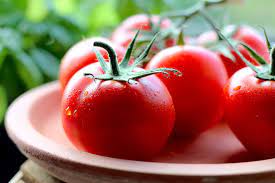
Firstly, introducing Auscrops, a wonderful market vending company bridging farmers and customers together through market vendors. Click here to find out more about Is a Tomato a Fruit or a Vegetable as well fruit and vegetable offers.
Is a Tomato a Fruit or a Vegetable?
Have you ever been in a grocery store, looking for the perfect ingredients for your recipe, and then asked yourself, “Is a tomato a fruit?” It’s a question many of us have pondered, and it’s time we settled the debate once and for all. In this blog post, we’ll dive into the history of the tomato, how we define fruits and vegetables, and ultimately determine whether a tomato is a fruit or a vegetable.
The History of the Tomato
The tomato is native to western South America and was first cultivated by the Aztecs in Mexico. It was introduced to Europe in the 16th century and quickly became popular among the wealthy for its bright color and unique taste. However, for a long time, it was believed to be poisonous, and people used it as an ornamental plant instead of a food source. It wasn’t until the 18th century that the tomato gained widespread acceptance as a food item.
Defining Fruits and Vegetables
Before we can determine whether a tomato is a fruit or a vegetable, we need to understand what makes a fruit a fruit and a vegetable, a vegetable. Fruits defined as the mature ovary of a flowering plant, usually containing seeds. In contrast, vegetables include any edible part of a plant, including roots, bulbs, leaves, stems, and so on. So, now we know what we’re looking for.
The Science of a Tomato
Although we often think of them as vegetables, they are technically fruits because they meet the botanical definition of a fruit. Tomato plants flower and produce fruit and contain seeds, which are the mature ovules of the plant. While in the culinary world, tomatoes generally treated like vegetables, they are technically fruits.
The Legal Classification of Tomatoes
The confusion about whether they are fruits or vegetables doesn’t just exist in the culinary world. In 1893, the United States Supreme Court heard a case about whether tomatoes should classify as fruits (not taxed) or vegetables (which are). The court ultimately decided that tomatoes should considered vegetables. Because typically used in savory dishes and not as desserts. This legal definition was based purely on culinary usage, though, not botanical facts.
Conclusion
So, there you have it. While we often refer to a tomato as vegetables, they are, technically, fruits. While they might taste great in salads and stews, they are biologically a fruit. But don’t worry, specifying a tomato as a fruit or vegetable won’t have any impact on its nutritional value. Which remains the same no matter how we categorize it.
Click here to read similar articles.
 Français
Français 











